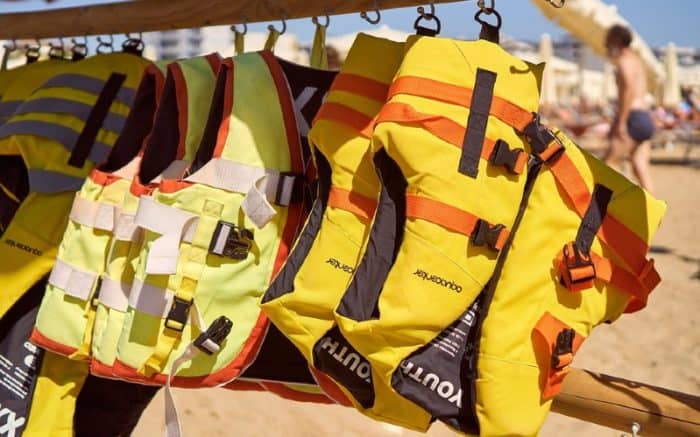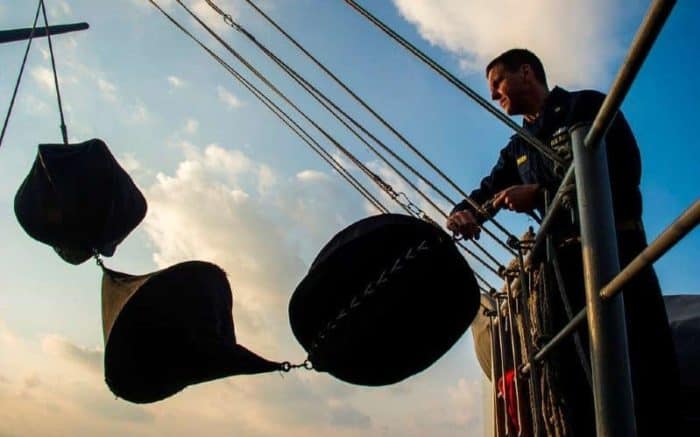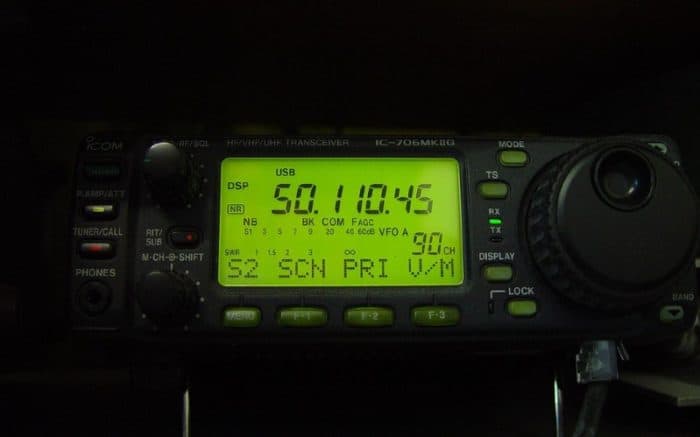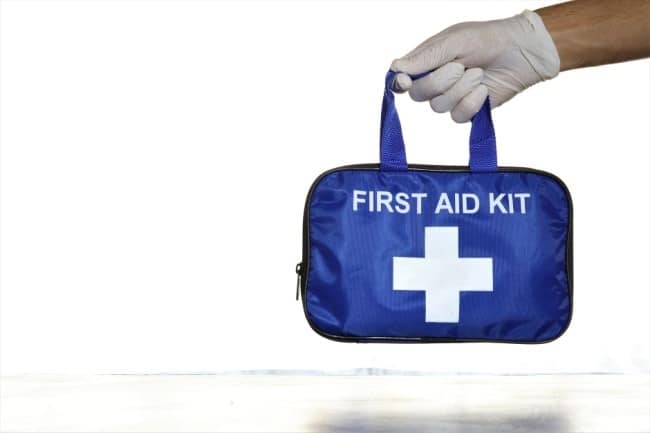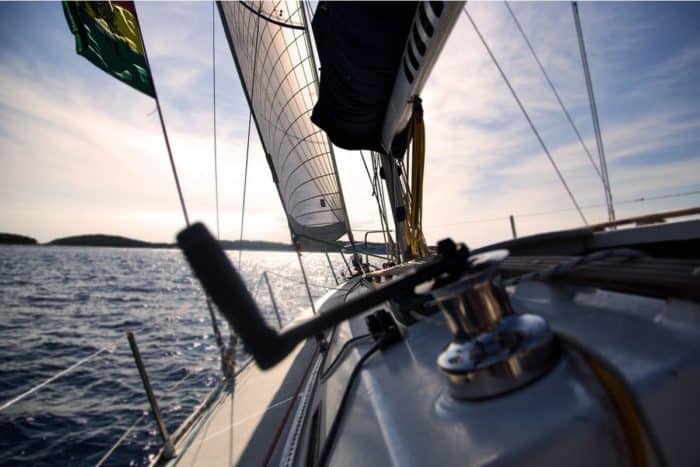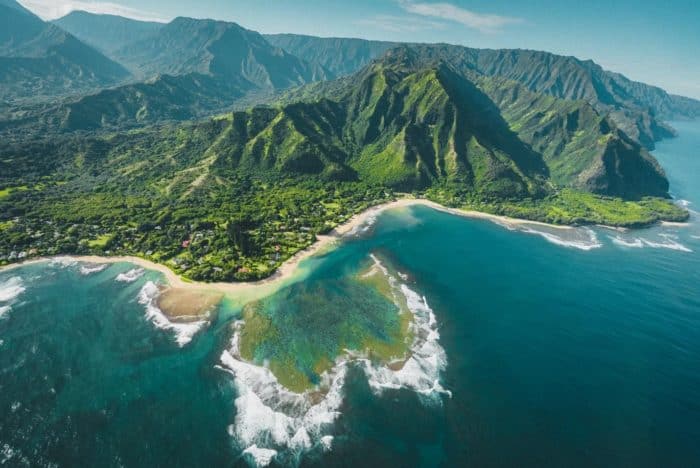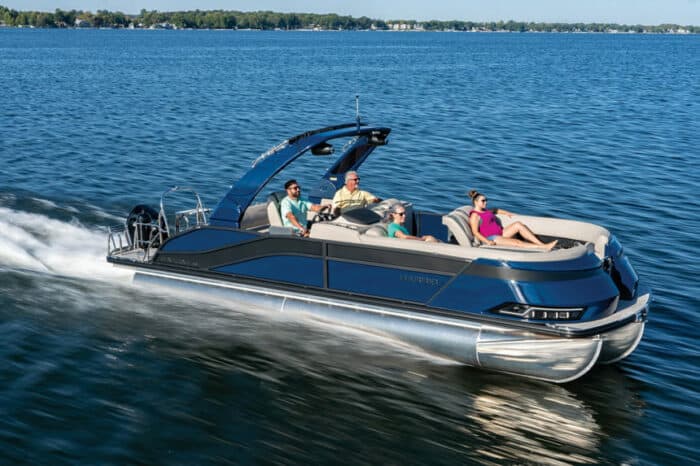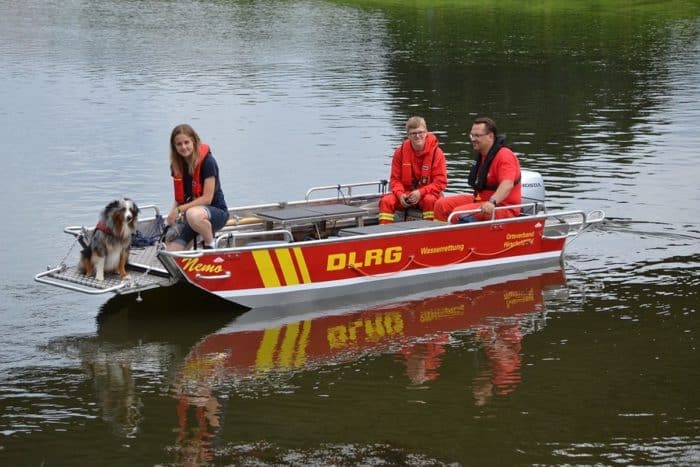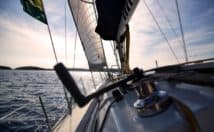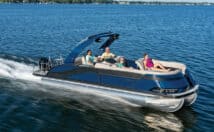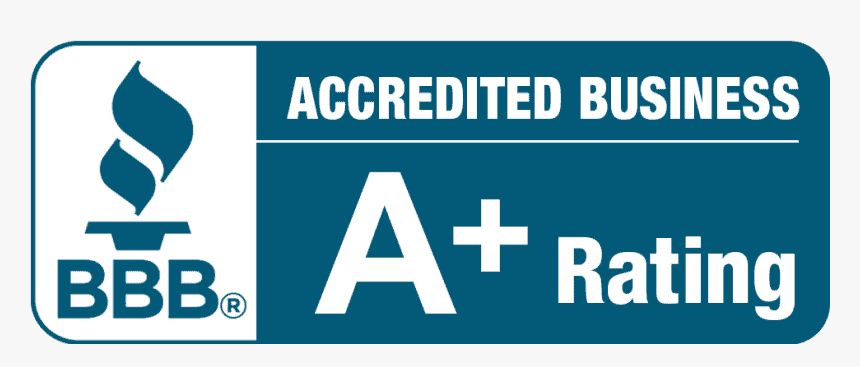Your Definitive Guide to Boat Safety Equipment
Some boat safety equipment is legally required while others are just a good idea to ensure safety. You can prevent or lessen damage and injury by making sure you have the necessary boat safety equipment before you take your next boat trip.
Boat Safety Equipment You Need on Board
We’re going to break down safety equipment into five sections.
- 1 – Life Jackets
- 2 – Fire Extinguishers
- 3 – Visual and Sound Signals
- 4 – Communications Tools
- 5 – EPIRB
From there we will cover some smaller additional items you should consider and a pre-launch checklist to ensure that not only do you have the right gear but you have everything in good working order before you head out.
1. Life Jackets: Legally Required
You are legally required to have one personal floatation device (PFD)/life jacket on board for every passenger on the vessel. These personal flotation devices must be approved by the United States Coast Guard. Any Coast Guard approved device will make it clear that it is approved somewhere on a label.
- Approved types include type I, II or III PFDs.
- The life jackets need to be in good condition.
- Everyone should know how to put it on and it should fit properly.
If your boat exceeds 16 feet in length, you also need a throwable flotation device. All crew and passengers should know where it is. This can be used in a man overboard situation.
2. Fire Extinguishers: Legally Required
We recommend a fire extinguisher on every boat regardless of side or type. There are laws in place regarding extinguishers based on your boat’s size and motor type.
- A powerboat less than 26 feet must have one B I extinguisher on board. This doesn’t include outboards, as we said.
- Boats 26 feet to 40 feet must have two B I extinguishers or one B II.
- 40 feet to less than 65 feet must have 3 B I, or one B I and one B II
If you do not have a motor you do not require a fire extinguisher legally but it is still recommended in case of fire from another source.
If you have an outboard motor on a boat under 26 feet with no permanent fuel tanks you do not legally need an extinguisher but, as above, it’s a good idea.
We recommend keeping a fire extinguisher even on small craft like personal watercraft. PWC fires are not unheard of due to overheating engines.
3. Visual and Sound Signals: Legally Required
Boats are required to have visual signals as well as sound signaling devices. The Coast Guard requires that recreational vessels carry three day and three night visual distress signals.
Even the waving of arms can be considered a distress signal. Remember, three signals are required, not one of each. Pyrotechnic devices like flares have expiration dates so be aware of those. Approved visual distress signals include
- Day shapes and flags
- Hand-held flares
- Floating orange smoke
- Flare guns
- Orange flag
- Electric distress light
- Dye markers
- Code flags
- Square flag and ball
- Navigation lights are also a part of the required safety equipment. These must always be kept in good working order.
Approved sound signals include:
- If your boat is less than 39.4 it needs to have an airhorn or whistle on board. Something that can make a sound other boaters will hear.
- If your boat is over that size it needs the airhorn plus a bell or a whistle.
Visual Signal Exceptions
- If you are in a boat under 16 feet in length you do not need day shapes.
- Signals are not needed on manually propelled boats.
Signals at Night
Any boat, even ones under 16 feet or that are manually propelled, require some kind of visual signal at night. Vessels over 16 feet need them if they operate in coastal waters or the Great Lakes.
4. Communication Devices: Not Legally Required
A VHF radio is not a legal requirement on a boat but I would never dream of going out without one. The radio could be the most important piece of equipment on the boat in an emergency. Modern VHF radios can be very affordable and are a must have item.
Knowing the right channels on a VHF radio is important.
Channel 9 is for non-commercial vessels. This is for communication between recreational boaters. If someone has an issue they may bring it up here. It’s a good channel to monitor for non-emergency communications.
Channel 16 is the key channel for safety. This is the international hailing and distress frequency. A mayday call can be put out over channel 16. The Coast Guard can be contacted on channel 16. Remember, it’s specifically for emergency use.
You should have a chart on board that explains all the frequencies and their purpose.
Cell Phones
You do not have to have a cell phone on board but since most people have them all the time, it’s a potential backup communications tool. Always use the VHF radio first in an emergency but, if it fails, a cell phone may still work. Cell signals often do not reach far off shore so it may not work in an emergency which is why a VHF radio is always the best choice.
5. EPIRB: Not Legally Required
EPIRB stands for Emergency Position Indicating Radio Beacon. In the event you need to abandon ship or other serious emergencies, this could save your life. It sends a signal that allows rescuers to pinpoint your location in the event of a serious emergency such as running aground, capsizing or an abandon ship scenario.
Though not legally required we strongly recommend everyone invest in one if they boat on large bodies of water.
Additional Safety Items to Include
- GPS
- Two anchors. One should be secured to the rode and safely stored.
- First aid kit. Make sure it is a good quality kit with everything you could need. A checklist can be found here.
- Charged batteries. A good multimeter can help you check the charge. Having a charger on board is also a good idea as well.
- Tools and spare parts.
- Extra fuel. It needs to be secured and safely stored.
- Flashlight. Make sure the batteries are working.
- Charts and a compass. Electronic charts are the standard these days, but it’s always good to have paper ones in case of an emergency.
- Fenders
- Lines. You’ll want to have at least 3 spare dock lines
- Boat hook.
- Bailer. In case of flooding.
Pre-Launch Safety Check
In addition to having the right gear, you need to ensure your vessel is in safe working condition. After checking that you have the right items on board, check these items to make sure they are in good condition.
- Engine and fuel systems. Check coolant and oil. Look for any leaks, breaks, etc. Make sure the blower switch is working.
- Electronics. Double check battery levels. Make sure radio, GPS and other electronics are in working order. Ensure all lights and other electronics are able to turn on and off before departure.
- Bilge. Make sure vents are working and the bilge pump is functioning.
- Ground tackle. Check your anchor, anchor rode, winch, etc.
- Through hulls. Make sure Strainers, intakes and exhaust or discharge fittings are all clear. Check all valves and hoses.
- Lifelines and rails
- Make sure the deck isn’t slippery and the non-skid surfaces aren’t dirty
- Forecast. This can’t be overlooked. If you’re heading out for a day, check the weather report. You can prepare for bad weather much more easily if you know it’s coming.
- Documentation. Make sure you have your licenses, permits, registration and a float plan on board. Leave a copy of your float plan on shore with a friend or family member. In case of an emergency, this may help the Coast Guard track your vessel.
The Bottom Line
There are many pieces of boating safety equipment designed to keep you and your passengers safe at sea. We’ve listed everything we think is a must have for any boater. Not everything we listed is legally required to be on a boat. But when it comes to safety, we never recommend cutting corners. It’s better to be over prepared than under. With so many potential ways for something to go wrong, you want to make sure you’re doing everything you can. Remember, it’s not just your safety. There are passengers and other boaters who may be in peril as well.
Keep your safety gear up to date and in good order. As always, stay safe and have fun.
Categories: Boats, nauticalknowhow

